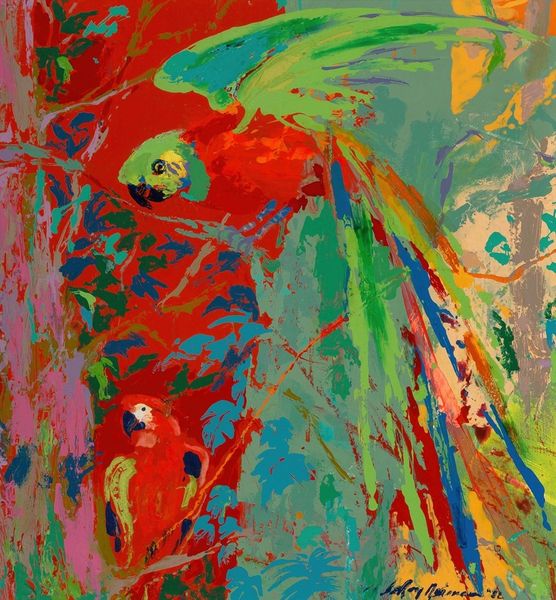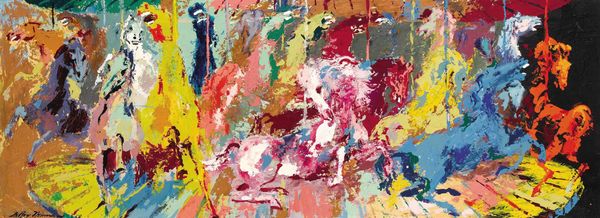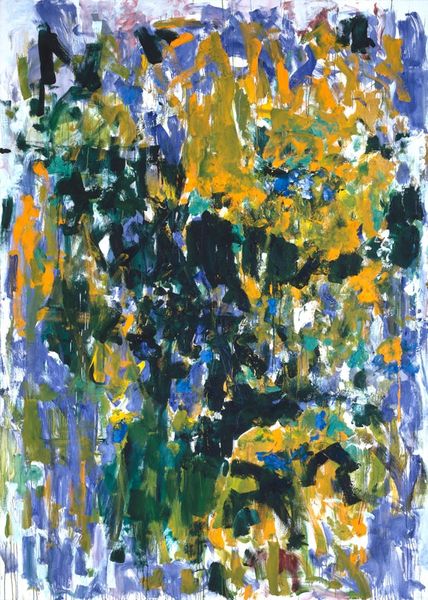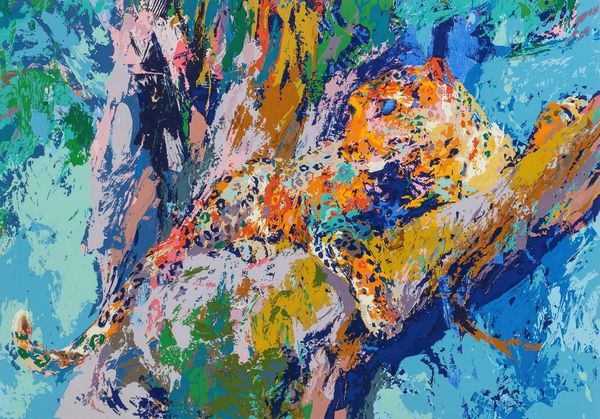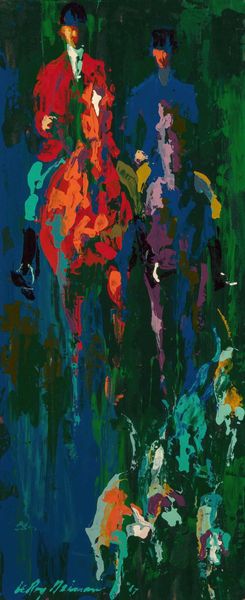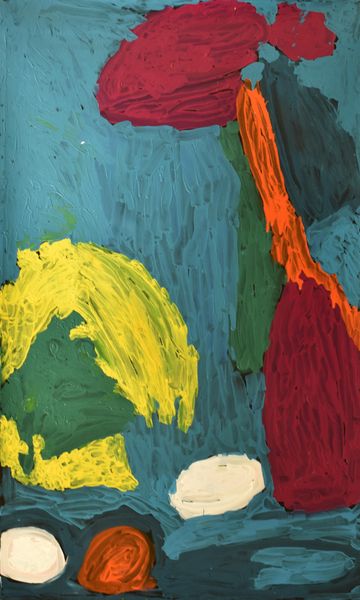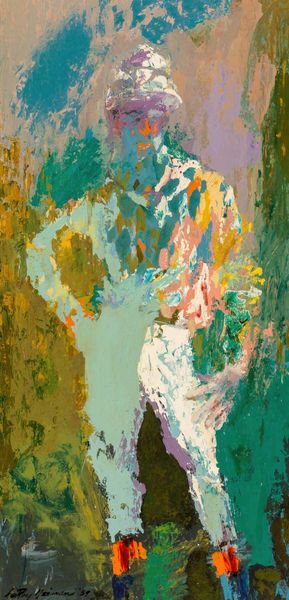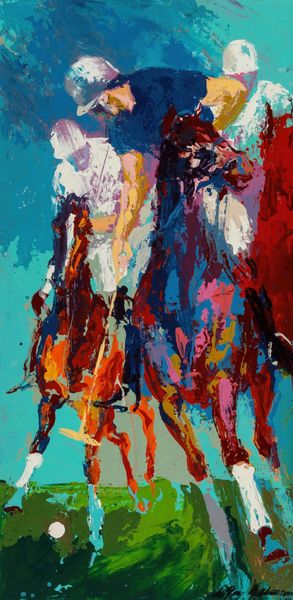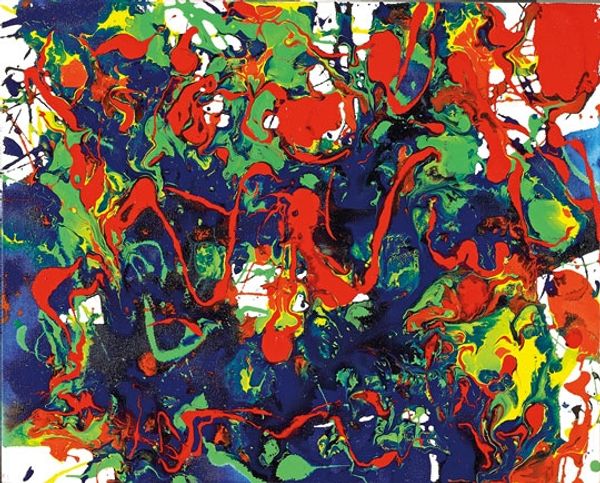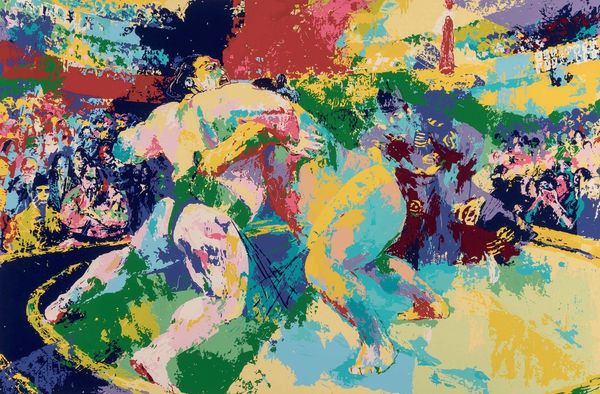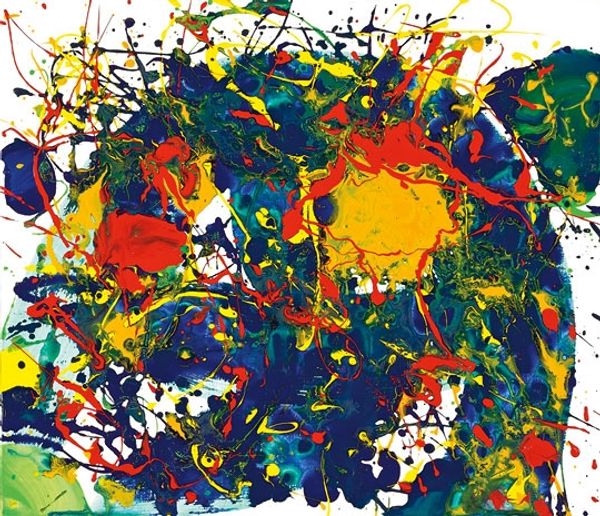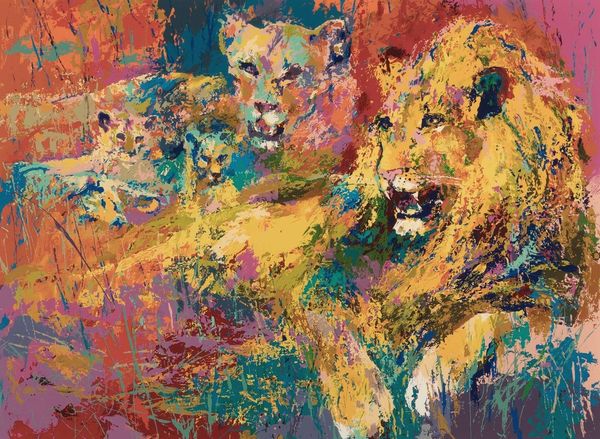
painting, acrylic-paint
#
portrait
#
abstract expressionism
#
fauvism
#
fauvism
#
painting
#
acrylic-paint
#
figuration
#
neo expressionist
#
neo-expressionism
#
geometric
Copyright: Modern Artists: Artvee
Editor: So, this is "Portrait of a Cheetah," an acrylic on canvas painting by LeRoy Neiman. The bright, almost chaotic colors, remind me a bit of Fauvism. I'm struck by how the cheetah is assembled from dabs of color. How do you interpret the significance of these choices? Curator: From a materialist perspective, consider the physical properties of acrylic paint. Its quick-drying nature allowed Neiman to build up these layers of color rapidly, capturing a sense of fleeting movement, appropriate for depicting a cheetah. It enabled mass production. The canvas is important. Do you see it as traditionally crafted or mass produced? Editor: I suppose mass produced since Neiman reproduced so many canvases of this image... So you’re suggesting that the acrylic’s availability and ease of use were key to his artistic process, enabling mass-produced art for mass consumption, like Warhol's soup cans? Curator: Precisely. It raises questions about the nature of artistic labor itself. Was he striving for unique expression, or embracing a form of industrialized art production, geared towards the demands of the art market? This neo-expressionist approach, paired with Fauvist color sensibilities, places emphasis not on representation but the commodification and construction of a desired aesthetic. Editor: That's interesting. I hadn’t considered how the materials themselves reflect the artist's relationship to the art market and the wider consumer culture. So, the medium really is the message. Curator: Absolutely. And the lack of a specific date invites another question: is this artwork perpetually 'now,' endlessly reproducible and consumed, devoid of historical grounding? The context shifts from artistic intention to the economics of production and consumption, placing labor and materiality at the center. Editor: That gives me a lot to think about in terms of how the art was made and who it's really for. Thank you! Curator: A pleasure, always consider what labour lies beneath what is made visible.
Comments
No comments
Be the first to comment and join the conversation on the ultimate creative platform.
